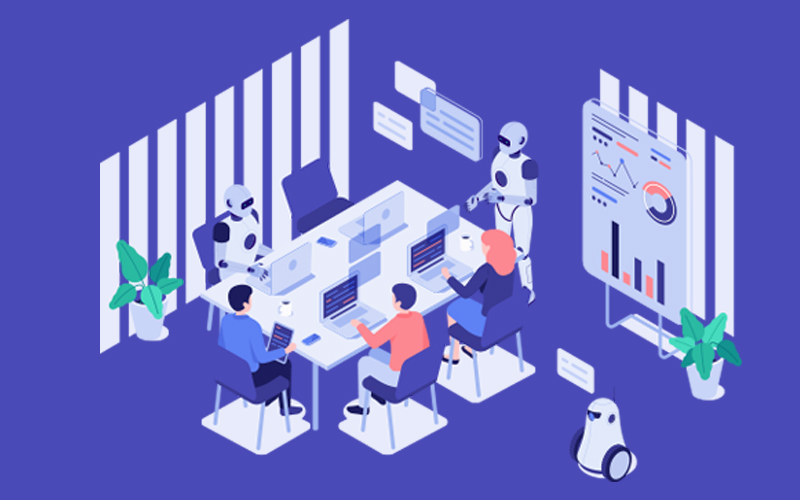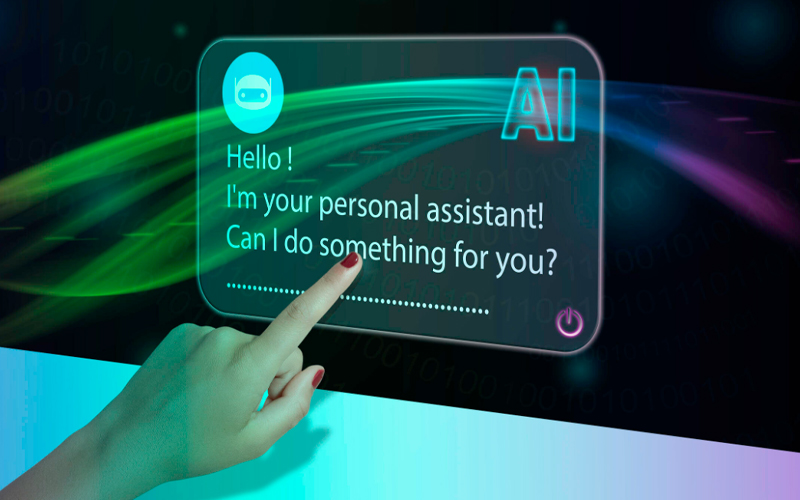If 2023 was the year leaders experimented with generative AI, 2025 marks the shift of intelligent agents in AI from pilots to production. Intelligent agents, software entities that perceive, reason, and act are unlike static chatbots. These systems take initiative, call tools, execute tasks, and learn continuously. Intelligent agents are already embedded in daily life through personal assistants, recommendation engines, and self-driving cars. Today, most organisations use these agents in at least one workflow. This signals a future where they act as strategic catalysts, changing how companies create value, make decisions, and stay competitive.
The focus is no longer on whether intelligent agents in AI matter, but on how to deploy them responsibly and profitably. This guide offers a practical overview, explains the architecture of intelligent agent in AI, and explores real-world applications.
what is an intelligent agent in AI?
To understand their transformative potential, it helps to define what an intelligent agent in AI is. At its core, an intelligent agent is a software or robotic system capable of sensing its environment, processing data, and taking actions that maximise the likelihood of achieving objectives. These agents adapt to changing conditions, learn from feedback, and often operate autonomously.
In practice, an intelligent agent performs three key functions: Perception (collecting data from sensors or inputs); Reasoning (deciding what action to take based on goals); and Action (executing decisions using actuators or outputs).
Depending on their design and purpose, intelligent agents can be categorised as:
- Simple reflex agents: Respond to inputs through preset rules, such as a vacuum robot changing direction when it encounters an obstacle.
- Model-based reflex agents: Maintain an internal model of the environment for better decision-making.
- Goal-based agents: Choose actions that achieve specific objectives.
- Utility-based agents: Evaluate multiple outcomes to maximise overall benefit.
- Learning agents: Continuously improve performance by learning from experience.
Most real-world applications combine these approaches to balance responsiveness, adaptability, and intelligence. This leads to the next question: how are intelligent agents structured to operate effectively? Their architecture provides the answer.
the architecture of intelligent agent in AI
The architecture defines how agents perceive their environment, reason about what to do, and take action, bringing their adaptive intelligence to life. Key components include:
- Sensors: Capture environmental data (cameras, microphones, APIs).
- Actuators: Enable interactions (motors, notifications, commands).
- Perception module: Transforms raw data into meaningful insights.
- Reasoning module: Applies logic or AI algorithms to select actions.
- Knowledge base: Stores data, rules, and learned patterns for decision-making.
- Action module: Executes the selected plan.
Several architectural models guide how these components interact:
- Deliberative (symbolic) architecture: Uses explicit reasoning, e.g., chess programs evaluating moves.
- Reactive architecture: Focuses on fast responses without complex reasoning, e.g., industrial robots reacting to sensors.
- Hybrid architecture: Combines reactive speed with deliberative planning for autonomous systems.
- Layered architecture: Separates perception, reasoning, and action into modular layers for scalability.
Depending on the task complexity and operational environment, the chosen architecture forms the basis for effective deployment.
practical applications of intelligent agents
With a clear architecture in place, intelligent agents bring tangible value across industries, powering systems that millions of people interact with daily. Some key applications include:
 Virtual assistants: AI-powered assistants like Google Assistant or Alexa act as intelligent agents that process voice input, understand intent, and deliver responses.
Virtual assistants: AI-powered assistants like Google Assistant or Alexa act as intelligent agents that process voice input, understand intent, and deliver responses.
 Autonomous vehicles - Self-driving cars use layered architectures to process sensory input, plan routes, and make real-time driving decisions.
Autonomous vehicles - Self-driving cars use layered architectures to process sensory input, plan routes, and make real-time driving decisions.
 Healthcare: Intelligent agents assist doctors by analysing patient data, predicting disease risks, and recommending treatments.
Healthcare: Intelligent agents assist doctors by analysing patient data, predicting disease risks, and recommending treatments.
 Finance: Fraud detection systems operate as utility-based agents, weighing probabilities and deciding when to flag transactions.
Finance: Fraud detection systems operate as utility-based agents, weighing probabilities and deciding when to flag transactions.
 Customer service: Chatbots act as reactive and goal-based agents, resolving queries quickly while escalating complex issues to humans.
Customer service: Chatbots act as reactive and goal-based agents, resolving queries quickly while escalating complex issues to humans.
 Smart homes: From thermostats to lighting systems, intelligent agents manage resources efficiently based on user behaviour.
Smart homes: From thermostats to lighting systems, intelligent agents manage resources efficiently based on user behaviour.
Managing risks proactively protects the enterprise and strengthens trust with customers and regulators.
challenges in designing and deploying intelligent agents
Deploying intelligent agents comes with several challenges that enterprises must navigate carefully. These systems operate in complex, dynamic environments, requiring continuous adaptation to unpredictable real-world conditions.
Data quality and output reliability are also critical, as poor or biased data can lead to flawed decisions, and LLM-based agents may produce opaque reasoning.
Beyond technical concerns, ethics, security, and accountability are essential, demanding fairness, transparency, and safeguards against misuse.
Integration with existing platforms can pose additional hurdles, with legacy systems often needing costly customisation.
Finally, designing and deploying effective intelligent agents requires specialised expertise across data science, software engineering, and workflow orchestration, making careful planning and skilled execution essential for success.
a practical roadmap for enterprises
Deploying intelligent agents at scale requires strategy, governance, and incremental change management. Leaders should consider a phased approach:
- Identify high-value use cases: Target areas with complex decisions or unstructured data.
- Start modular, then scale: Deploy targeted agents before expanding to multi-agent systems.
- Design for governance: Embed transparency, audit trails, and security safeguards.
- Enable adaptive collaboration: Ensure systems learn, evolve, and share knowledge.
- Measure and refine continuously: Track efficiency, error reduction, and user satisfaction.
Enterprises should also assess integration with existing workflows, define clear KPIs, and build cross-functional teams to guide adoption. Many collaborate with specialists to accelerate this journey. Partners like Infosys BPM help enterprises design modular, secure, and adaptive agent ecosystems, balancing innovation with trust while ensuring long-term scalability and alignment with business objectives.
the future of intelligent agents
Regulatory frameworks such as the EU AI Act and emerging US guidelines will accelerate adoption by enforcing transparency, explainability, and governance-by-design. At the same time, intelligent agents are set to play a pivotal role in achieving sustainability goals, optimising energy use, reducing waste, and supporting ESG outcomes where efficiency aligns with responsibility.
Intelligent agents are evolving into a new operating paradigm, redefining how enterprises think, act, and compete. As agents become more autonomous, collaborative, and context-aware, they will move beyond narrow workflows to orchestrate entire value chains. Imagine ecosystems where supply chains self-adjust in real time, customer interactions are hyper-personalised at scale, and business decisions are informed by agents that continuously learn from global market shifts. Enabled by multimodal AI, multi-agent systems, and enterprise-grade guardrails, intelligent agents will emerge as strategic co-pilots, helping leaders anticipate disruption, unlock innovation, and accelerate growth.
For organisations willing to invest now, the advantage is clear: intelligent agents will not just optimise today’s operations, they will reshape the future of business itself.







